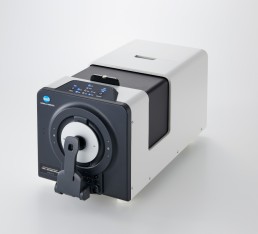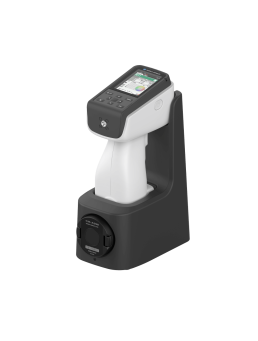Measuring the darkest color in the world
Most remarkable and unrealized that the average person can perceive millions of colors. These colors vary from light to dark and dull to vibrant, capturing an extraordinary array of hues seen by the human eye. While we have delved into our imagination to create names for many of these colors, Crimson, Honeydew, Peachpuff, Mulberry ‘, there are countless more still without their own paint swatch or crayon color name. However, many of these known and unknown colors are often mistaken for other colors, as seen in our frequent misperception of black.
Technically, true black is not a color. Black is the ABSENCE of color and is devoid of hue. This is because when light hits a black object, the object absorbs all of the light’s wavelengths. Our perception of color is dependent on the wavelength and amount of light sent to our eyes; if no light strikes the object or minimal light reflects off an object, there is no color perception (blackness). Cones within the human eye’s retina play an integral role because of their sensitivity to color. Every moment we are awake and wide-eyed, these cones are sending messages to our brain to translate what color we are seeing in front of us. Without enough light reflecting off an object, the retina cones have no stimulation to send our brain messages.
The ‘contrast effect’ can have a lot to do with color misperception. Very few objects we come across in our daily life are truly black. An object we perceive as black is often just a black shade mixed with a color hue (e.g., dark red or purple). If we place a dark-colored object on a light background, it appears darker than it is. For example, a plum’s deep, purple hue placed on a white countertop illuminated by daylight will likely appear black. Also influencing our perception of an object’s color are light sources and the angle at which we view it, as these directly affect how bright an object will appear to the human eye. At other times, simply an object’s deep hue is too dark for the human eye to discern from black.
One of the blackest black materials is Vantablack. Vantablack absorbs 99.96% of light. Surrey Nanosystems developed it in 2014 to use components for space exploration; this is especially useful for telescopes as it reduces the reflectance of light when observing stars making the study more accurate. Currently, BMW is using it in its unique range of cars. Looking at this color is like looking at a black void; if you had a piece of absolute black fabric in this color, you would not be able to see any lines or creases as the light would not be reflecting on it. In 2019, engineers at MIT developed a new blackest material that absorbs 99.995 percent light.
To best determine an object’s color, a spectrophotometer is required. These color measurement instruments accurately quantify color in numerical terms and are immune to the subjectivity of our visual color perception. The accuracy and precision of a high-quality spectrophotometer enable them to sense even the slightest difference in surface color and lightness. Measuring an object in deep black color with one of these instruments will often reveal some amount of red, yellow, or plum, purple hue in the object or product, demonstrating the different shades of black.
Accurate measurements of color are critical to the R&D, manufacturing, and production processes. The impact color has on the consistency and appearance of a product and the visual misperceptions it can cause makes it an essential element. Next time you look at a ‘black’ object, know that there is likely a little crimson, mulberry, or some nameless color hue in there being mistaken for the ‘black’ color your eyes perceive it to be.










